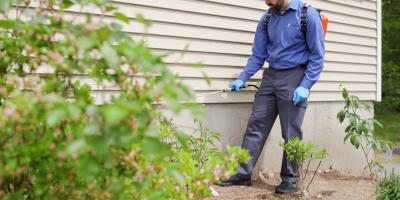The Dose Makes the Poison – Why Natural/Green Products are Not Better!

The Assumption that Only Manmade Materials are Toxic is Incorrect:
The risk, or harm, a pesticide or any chemical poses is not solely related to its toxicity. Risk is a combination of two factors: toxicity and exposure, a multiplicative function of Risk = Toxicity x Exposure. This means that all chemicals, even water (H2O), are harmful if the exposure or dose is very large. Water’s lethal dose is 90 ml/kg of body weight or about half a cup of water for every pound you weigh. Water intoxication is a real health threat and athletes die of it each year when overhydration (hyperhydration) occurs and the sodium balance is impacted. (Please note: Those who eat and drink frequently and “normally” don’t need to worry.)
Since nothing is non-toxic, not even water or oxygen, and the dose makes the poison, the most important component of human and pet risk is exposure. Nicotine is a very toxic substance. Many children across the country experience nicotine poisoning due to eating cigarettes or exposure to liquid nicotine products. As little as one teaspoon of liquid nicotine can kill a small child. If nicotine were a modern-day pesticide, its label would carry a DANGER-POISON signal word product, the highest EPA rating issued. (JP Pest Services only uses materials in the lowest tier of pesticide toxicity, CAUTION.) Yet nicotine is extracted from tobacco plants.
So, natural products can be as toxic, even more so, than manmade materials. Responsible pesticide use lowers the risks to people, pets, wildlife, and the environment by eliminating or greatly reducing exposure AND using these materials only when and where necessary. Applying materials to targeted areas when people and pets are not present and informing customers to stay out of these treated zones until these sprays have dried dramatically reduces exposure.
JP Pest Services Uses the Most Modern and Least Hazardous Materials Available to Control Pests:
For example, ant gel baits are among the least toxic control materials used in pest management. They are designed to mimic the sweet “nectar”, also known as honeydew, produced by plant sucking insects, like aphids, that ants crave. The goal is to provide foraging ants a low enough dose of a toxin to keep them alive for 12 to 24 hours. Because ants are social insects, they will take these ingested baits back to the colony and feed all other stages within the nest. Subsequently, the workers and eventually the queens die causing the colony to collapse, thereby eliminating the infesting ants.
On the other hand, Boric acid (orthoboric acid B(OH)3) is a naturally occurring mineral used in pest control. It is most effective in the control of wood boring insects, including termites to some extent. However, ant baits containing this product proved too toxic to produce the transfer effects described above. They produced lots of dead foragers at the application site, but didn’t get carried back to nests, nestmates, and most importantly, queens.
Additionally, JP uses another classification of pesticides known as reduced-risk pesticides. Reduce-risk pesticides are those that EPA has rigorously tested and approved to have a low impact on human health, lower toxicity to non-target organisms (birds, fish, plants), low potential for ground water contamination, low use rates, low pest resistance potential, and high compatibility with Integrated Pest Management (IPM) practices.
To date, no natural or green product has been discovered with these properties. Furthermore, naturally occurring materials, at least those discovered so far, are not as stable as synthetic materials because they breakdown quickly in sunlight and wash away easily after application. So, they don’t last as long and must be reapplied more frequently, and in the meantime, customers must continue to deal with the pest situation.
What is JP’s Position on Green Products?
At JP Pest Services, we take the role of public education very seriously. We can only present the facts and put together the best programs and service offerings in our industry, we cannot convince everyone or change what some believe about all natural products. We do use green products when proven to work as represented by the manufacturers, and such is the case with Aprehend for bed bug control. Aprehend is a product containing naturally occurring fungal spores that specifically target bed bugs when applied in accordance with label directions. While this product is slow acting, it delivers control beyond what any synthetic material can do.
However, while Aprehend is a shining example of a green product that works; overall, green products do not offer long-lasting protection against pests; nor do they transfer/share with unexposed individuals; and they are simply not as effective at killing or repelling pests like biting mosquitoes, ticks, cockroaches, and other serious pests. In the future, this situation could change as new materials come into the marketplace. At JP Pest Services, we strive to remain on our industry’s cutting edge, so we will consider all new technology that can deliver results and reduce risk.
Bottom Line:
Controlling pests requires expertise, experience, and attention to detail. There is no silver bullet or magic pill. Even highly effective ant baits must be used wisely and in conjunction with other techniques. We at JP Pest Services are committed to providing the best services we can for homes and businesses. If green options are what you want, then we will provide the best program commercially available. JP Pest Services is ready to meet whatever pest control challenges you may have!



